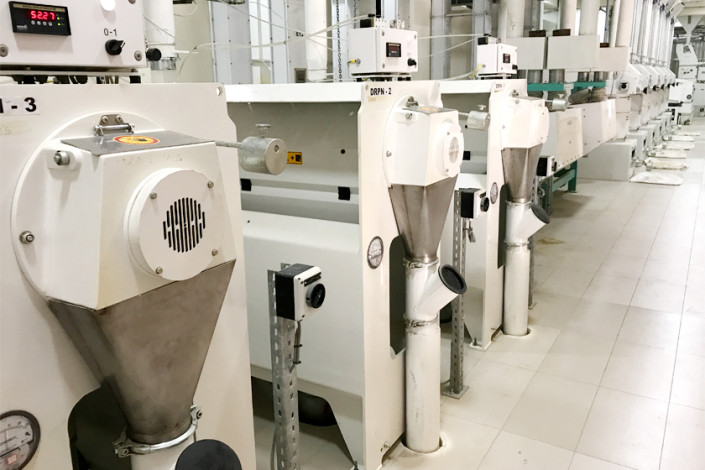
File Photo
The whitening movement of the rice mill is composed of the collision and rolling movement of the rice grains, which is the basic factor for the whitening of the rice mill. The collision movement of the rice mill is divided into three categories: the first type is the collision between the rice grain and the white roller to obtain the speed and pressure; the second type is the speed of the rice grains colliding with each other under a certain whitening pressure; the third type has The speed of the rice grains collides with other components in the white inner wall and the whitening chamber under a certain whitening pressure. The first type of collision is the basis of the whitening work.
Rice miller wipes away the collision of whitening
Type 1 collision: The impact force generated by the collision of the rice grain and the iron roller rib on the forward surface acts on the cortex and endosperm junction of the rice grain. The rib exerts pressure on the rice grain to create friction between the grain layer and the rib. The impact force and the friction force form a couple, the moment is the thickness of the skin layer, and the skin layer is broken and peeled off.
Type 2 collision: The average rubbing off between the rice grains and the speed at which the rice grains come into contact with each other produces impact and friction, and the formation of the force causes the cortex to continue to break and be peeled off.
Type 3 collision: The grain speed is low, mainly rubbing away the residual skin layer and discharging the peeled skin layer out of the sieve cylinder.
Milling machine grinding and colliding
Type 1 collision: The collision between the rice grain and the sand blade produces an impact force, and at the same time, centrifugal force is generated. The combination of the two causes the rice grain layer to be wedged by the sandblade. The applied force is decomposed into the cutting force and the cutting force to complete the effect of grinding the cortex. When the rice leaves the white roller, the grinding is terminated.
Type 2 collision: Under the action of average grinding and whitening pressure, the rice grains collide with each other at a speed lower than the line speed of the sand roller to produce a "study" effect, removing the looser part of the skin layer that has been cut by the sand blade and removing it without loosening. Small cortex.
Type 3 collision: The collision is the same as the first! but weaker, and the ground skin is removed.
Source: Online/GFMM
Comment Now